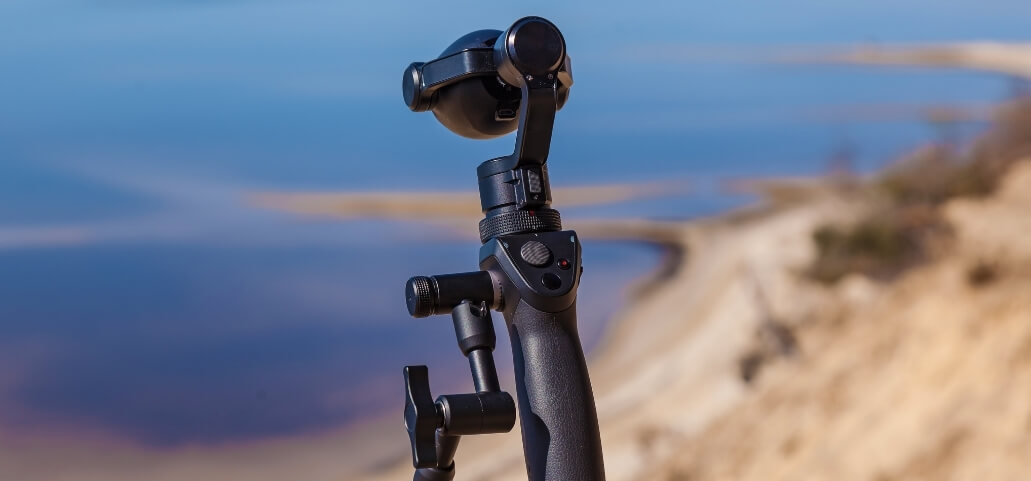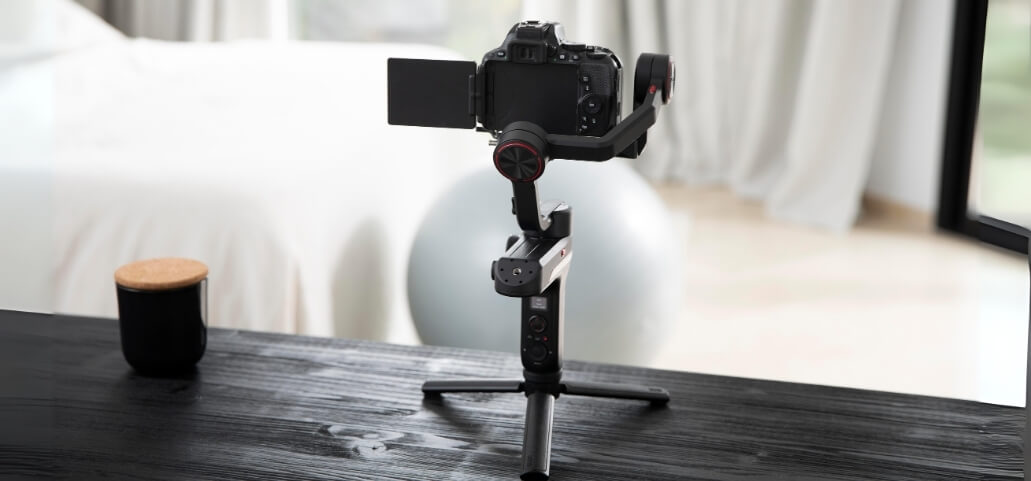Keep knowing the importance of what is a gimbal camera to capture the smoothest, most stable footage. A gimbal camera is a revolutionary tool in modern photography and videography, designed to stabilize footage and deliver smooth, professional-quality images. Unlike traditional cameras, gimbal cameras use advanced 3-axis stabilization, brushless motors, and gyroscopic sensors to counteract unwanted movements and vibrations. This results in incredibly steady shots, whether you’re filming an action-packed adventure or capturing a serene landscape. Understanding what is a gimbal camera and how it works can significantly elevate your filming capabilities.
What Exactly is a Gimbal Camera?
A gimbal camera is a stabilizing device that uses motors and sensors to keep your camera steady in any situation. Imagine a three-axis arm that holds your camera, keeping it level and balanced, even when you move or the ground beneath you is unstable. This technology was first used in cinema cameras but has now become more accessible for everyday use with the rise of smartphone gimbals.
How Does It Work?
Gimbals work by using three axes (or directions) to stabilize your camera: pan (side-to-side), tilt (up-and-down), and roll (rotation). The motors inside the gimbal detect any movement and quickly adjust the camera’s position to compensate for it. This results in buttery smooth footage, even when you’re moving or shooting in challenging conditions.
Benefits of Using a Gimbal Camera:
- Enhanced Image and Video Quality: A gimbal camera eliminates shaky footage, producing stabilized shots that often match professional standards, ensuring your content stands out.
- Greater Versatility and Creativity: Gimbals offer freedom of movement and a variety of shot angles, enabling creators to capture unique perspectives and experiment with diverse techniques.
- Professional-Grade Stabilization: The precision of gimbal cameras makes them indispensable for professional photographers and videographers, providing the necessary stability for high-quality shots.
- User-Friendly Design: Most gimbals are easy to use and require minimal setup, making them accessible to creators at all skill levels.
- Compact and Portable: Designed to be lightweight and compact, many gimbals are ideal for travel and on-the-go shooting.
The Mechanics Behind Gimbal Cameras

The core technology behind a gimbal camera is its three-axis stabilization system. This system consists of three motorized axes—roll, pitch, and yaw—that work together to provide smooth movement across all angles. The roll axis controls side-to-side movements, the pitch axis stabilizes up-and-down movements, and the yaw axis handles left-and-right panning.
Benefits of Three-Axis Stabilization:
This sophisticated system offers several benefits to creators:
- Improved image and video quality: With stabilized footage, every shot is sharp, focused, and visually appealing.
- Enhanced creativity and versatility: The ability to smoothly move the camera in any direction opens up a world of creative possibilities, allowing for dynamic shots that were previously impossible to capture.
- Professional-grade stabilization: Whether you’re shooting with a DSLR or a smartphone, a three-axis gimbal provides professional-level stability that’s essential for high-quality footage.
Types of Gimbal Cameras
There are several types of gimbal cameras available on the market, each designed for different purposes and devices:
Smartphone Gimbals:
Smartphone gimbals are designed specifically for use with smartphones. These compact yet powerful devices offer seamless integration with your phone, providing enhanced stabilization and added features like face tracking and time-lapse.
Action Camera Gimbals:
Action camera gimbals are specifically designed for rugged outdoor use. They’re compatible with popular action cameras like GoPro, providing stable footage even in extreme conditions.
DSLR Gimbals:
DSLR gimbals are built to handle heavier and bulkier cameras. They offer advanced features such as 360° rotation and follow mode, allowing for smooth and seamless movement while shooting.
Choosing the Right Gimbal Camera

When it comes to choosing the right gimbal camera, there are a few important factors to consider:
- Compatibility: Make sure that the gimbal is compatible with your camera or smartphone. Check the manufacturer’s specifications and ensure that the gimbal supports your device, including any specific models or brands.
- Payload Capacity: Different gimbals have different weight limits, so make sure to check if your camera or phone falls within the payload capacity. Overloading a gimbal can affect its performance and may lead to damage or instability during use. It’s always better to choose a gimbal with a slightly higher payload capacity than your camera’s weight for optimal performance.
- Battery Life: Consider how long you’ll be shooting and choose a gimbal with a battery life that suits your needs. Long shooting sessions require a gimbal with a robust battery life. Some gimbals also offer swappable batteries or quick-charging options, which can be beneficial for extended use.
- Additional Features: Some gimbals offer additional features like face tracking, time-lapse, and follow mode. Decide which features are essential for your shooting style. For instance, face tracking can be useful for vlogging or self-shooting, while time-lapse and follow modes are great for capturing dynamic scenes and creating engaging content. Certain gimbals also come with smartphone apps that unlock advanced functionalities and customization options.
Taking the time to consider these factors will help you select a gimbal that not only meets your immediate needs but also enhances your overall shooting experience.
Maintaining Your Gimbal Camera
To ensure optimal performance and longevity of your gimbal camera, it’s important to maintain it regularly. Here are some tips:
- Calibrate your gimbal regularly to keep it functioning properly.
- Keep your gimbal clean and free from debris or dust.
- Store your gimbal in a protective case when not in use.
- Check for any loose screws or damaged parts before each use.
The Impact of Gimbal Cameras on Photography and Videography
Gimbal cameras have revolutionized photography and videography, offering unparalleled stability and smoothness in capturing moments.
Improved Image and Video Quality:
One of the most significant advantages of using a gimbal camera is the noticeable improvement in image and video quality. Shaky footage and blurred images become a thing of the past, enabling you to capture crystal-clear visuals effortlessly.
Enhanced Creativity and Versatility:
Gimbal cameras open up a world of creative possibilities. From capturing smooth cinematic shots to executing complex camera movements, the versatility of these devices allows photographers and videographers to push their creative boundaries.
Tips for Using Gimbal Cameras Effectively

- Practice makes perfect when it comes to using a gimbal camera. Spend some time familiarizing yourself with the controls and experimenting with different movements.
- Use additional accessories like a tripod or monopod for added stability when shooting in challenging environments.
- Keep your body movements smooth and fluid while operating the gimbal to avoid disrupting the stabilizing motors.
What is a Gimbal Camera Calibration?
Camera gimbal calibration is a crucial process that ensures your camera’s stabilizing system operates correctly. This procedure involves adjusting the gimbal’s sensors and motors to maintain optimal balance and stability while filming. Proper calibration can significantly enhance the quality of your footage, particularly during dynamic movements, by eliminating unwanted shake and jitter. Regular calibration is essential to achieve smooth, professional-grade videos, especially for filmmakers and drone enthusiasts who rely on consistent performance.
Future Trends and Innovations in Gimbal Technology
As technology continues to advance, so does gimbal technology. Here are a few future trends and innovations to look out for:
- Wireless Charging: Modern gimbals now feature wireless charging capabilities, ensuring convenient, hassle-free power on the go. This eliminates the need for cumbersome cables and allows for continuous shooting without interruptions.
- Gesture Control: Thanks to significant advancements in artificial intelligence, more gimbals are incorporating gesture control for hands-free operation. This means users can perform specific gestures to control the gimbal’s movements, making it easier to capture dynamic shots without physically touching the device.
- 360-Degree Gimbals: These advanced gimbals provide full rotation, enabling creators to capture seamless footage from every angle. This opens up new possibilities for creative filming, allowing for smooth, uninterrupted pans and tilts that were previously difficult to achieve with traditional gimbals.
With these innovations, gimbal technology is set to revolutionize the way creators capture and produce content, making it more intuitive and user-friendly than ever before.
Conclusion
Gimbal cameras have revolutionized the way we capture images and videos, offering unparalleled stability and creative flexibility. Whether you’re a seasoned professional or a newbie, incorporating a gimbal camera into your toolkit can dramatically enhance your visual storytelling. We encourage you to share your experiences with gimbal cameras and explore further to take your photography and videography skills to the next level.
Frequently Asked Questions
Q1: What is a gimbal camera exactly?
Answer: A gimbal camera is a device that uses three motors to keep a camera steady and level while filming, providing smoother and more stable footage. It can be used with various devices, such as smartphones, action cameras, and DSLRs.
Q2: Can I use any camera with a gimbal?
Answer: No, gimbals are designed for specific devices. Make sure to check the compatibility of your camera or smartphone before purchasing a gimbal.
Q3. How does gimbal stabilization work?
Answer: Gimbal stabilization uses sensors and motors to detect and counteract camera movements, maintaining steady footage even in dynamic environments.
Q4. How do I choose the right gimbal camera?
Answer: Consider factors like weight, battery life, and compatibility with other equipment. Research popular brands and models to make an informed decision.
Q5. Why is camera gimbal calibration important?
Answer: Calibration ensures optimal performance by setting the gimbal’s sensors to recognize its default position, correcting any drifts or misalignments.
Disclaimer: The sole intent of this blog article is to provide information. The opinions shared are those of the author and do not reflect the brand’s position. Please consult an expert before acting on any of the information presented here. Before acting on any information from this page, you should always perform your own research and get the advice of an expert.
Personal Experience: During my recent trip to Iceland, I had the chance to put a gimbal camera to the test. Despite the rugged terrain and unpredictable weather, the gimbal provided smooth and stable footage throughout the journey. The following mode allowed me to capture dynamic shots of waterfalls and glaciers, while the time-lapse feature beautifully documented the changing landscapes. The experience highlighted the gimbal’s ability to transform ordinary travel videos into cinematic masterpieces.
Why Trust Our Content?
At Crafted Chronicle, we are passionate about providing accurate, reliable, and valuable information to our readers. Our team of experts is dedicated to thoroughly researching and testing the latest photography and videography equipment, ensuring that our content is up-to-date and trustworthy. We aim to empower our readers to make informed decisions and elevate their creative endeavors.

